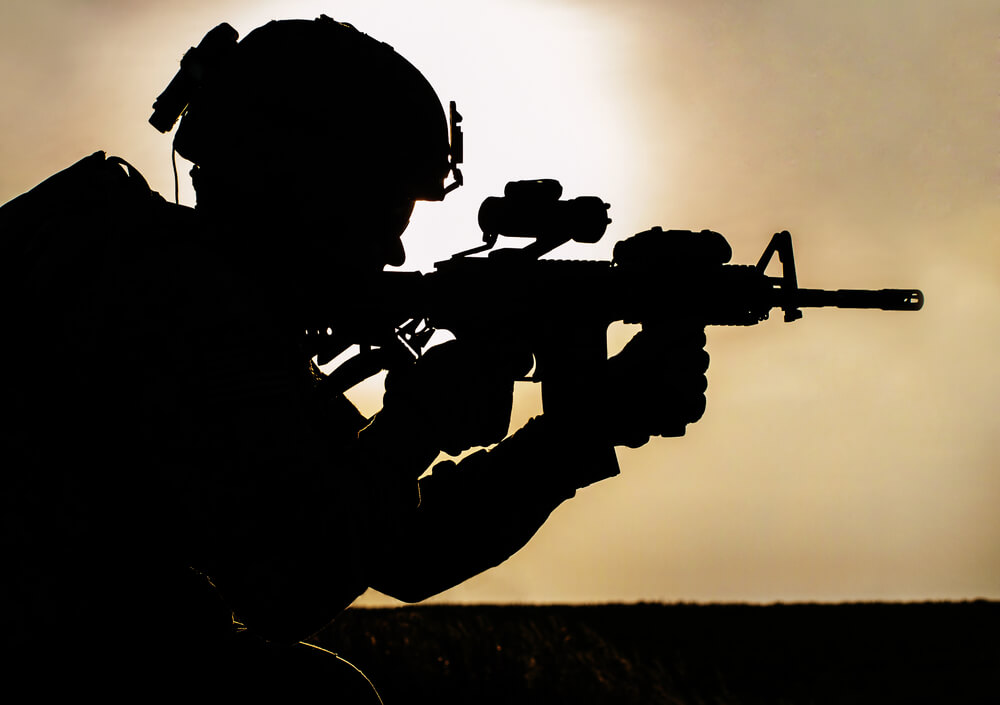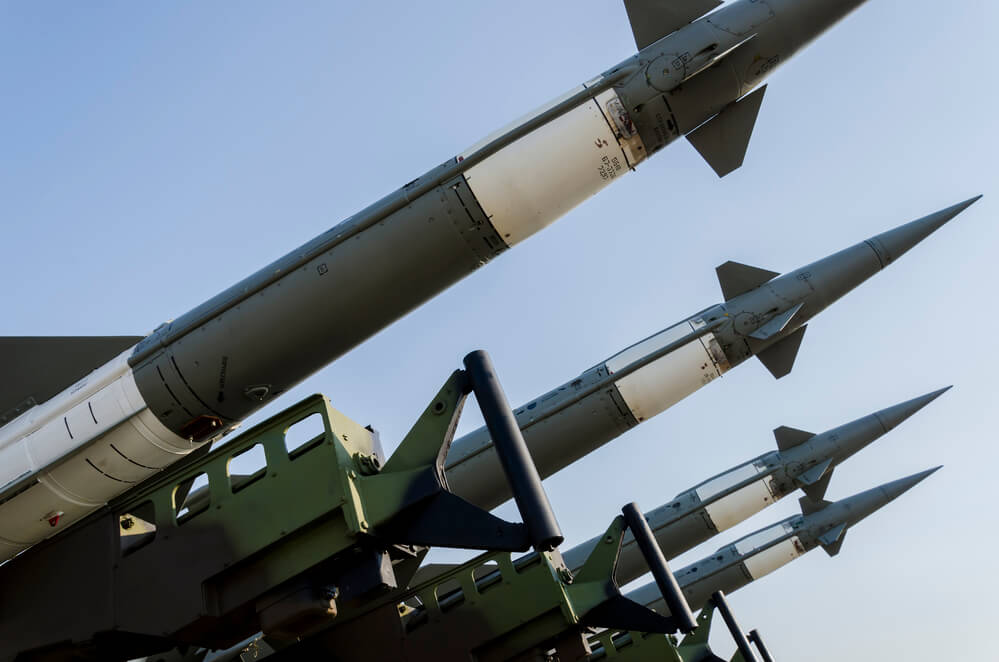Study: what will be the war between NATO and Russia
If President Putin plans to subordinate the Baltics to himself, he will pay dearly for it. It will take at least three days to conquer Estonia, Latvia and Lithuania. a recent report from the Swedish military analysis agency FOI.
Edition VG predicted how events will develop if the war between NATO and Russia actually begins.

Фото: Depositphotos
The Baltic states will undoubtedly become the most likely target of the Russian invasion, but Moscow has other potential targets in the West, according to a FOI report.
Due to the deep penetration into the waters around Northern Norway, Russia can disrupt sea communications between Western countries and strengthen the defense of its own naval bases in the Murmansk region.
In its report, a group of Swedish experts attempted to present the worst scenarios of the Russian invasion of the Baltic States.
First of all, Russia will try to achieve a political and military collapse in Latvia, then in Estonia and Lithuania.
The Russians will launch missile strikes and use the fleet to paralyze the ports, airports and infrastructure of all three countries at the same time, after which the ground forces will march through southeastern Estonia and eastern Latvia.
The fall of the Baltic
Two days later, Russian troops will surround Riga, the capital of Latvia. And a day later, the entire Baltic region will be under Russian control.
A similar scenario was modeled in the American think tank RAND (RAND), and came to the same conclusions. From the point of view of the West, the final is sad: in the short term, the NATO countries will be powerless to oppose Russian aggression.
NATO is lagging behind
The report compares how many troops Russia and NATO can end up with in a week, and the conclusions are truly disappointing: NATO countries will not scrape half of Russia's military might.
It used to be always like this: the Russian army always preferred quantity to quality. However, the situation has changed.
“The numerical superiority of Western countries does not in any way affect the quality of the troops. On the contrary, as for the “elite” units, the advantage is precisely on the side of Russia,” the report says.
So, in a week, opponents will be able to set against each other:
NATO:
- Ground Forces: 27-41 Battalions
- Special Forces: 12-17 battalions
- Gunships: Battalion 2-3
- Warships: 25-32
- Submarines: 7-11
- Combat aircraft: 14-19 divisions
Russia:
- Ground Forces: 49-59 Battalions
- Special Forces: Brigade 2
- Fighting helicopters: 9 Squadrons
- Warships: 4-12
- Submarines: 2
- Combat aircraft: 15 divisions
Mobilization for the week
One thing is clear: in the first week of the conflict, Russia will gather much more strength. In the ground forces, the advantage will be particularly noticeable. The armed forces of the Baltic States strongly depend on the support of a number of countries, so it is not easy to calculate at least approximate mobilization volumes. According to estimates by Swedish experts, however, the real numbers will not be so great.

Фото: Depositphotos
Blitzkrieg Vulnerability
The main misfortune of the NATO forces is their defenselessness before a lightning attack. It will take a lot of time to mobilize forces comparable to the Russian ones. The Russians, on the contrary, more than once demonstrated their ability to deploy significant troops near their western borders - and the last time it happened during the exercises "West-2017".
Teachings "West"
The exercises took place in a number of places in Belarus and the Kaliningrad region from 14 to 20 September 2017.
During the Cold War, it was the “West” that was considered to be the largest military show of the country. Then, from 100 to 150 thousands of military men took part in the exercises.
After the collapse of the USSR, the exercises were resumed only in the 1999 year - at the same time, Vladimir Putin came to power.
Moscow says that in 2017, thousands of soldiers took part in the exercises. According to estimates of the Norwegian intelligence, like its NATO colleagues, there were ten times more.
Russian ground forces
Putin has already placed a lot of forces on the border with the Baltic States. Mobile troops consist of tanks and infantry, and there are ten brigades. In addition, in case of need they will be supported by artillery. According to the Institute of Total Defense, in one week only Russia will be able to concentrate up to 150 thousands of soldiers in the Baltic States.
NATO ground forces
The weakness of the NATO troops lies in the fact that they are dispersed throughout the whole of Europe, and not located along the eastern border of the Baltic states.
Slowly but surely
Sooner or later, NATO will mobilize all its forces. Thanks to US support, the overall strength of the NATO forces will surpass the Russian one in all respects.
NATO (including the US):
- Total: 3 405 660 people
- Reserve: 2 412 910
- Tanks: 9 421
- Combat aircraft: 5 597
- Warships: 263
Russia:
- Total: 798 000 people
- Reserve: 2 000 000
- Tanks: 2 950
- Combat aircraft: 1 276
- Warships: 35

Фото: Depositphotos
Scary prospects
However, the process of mobilization will take several months, and by that time Russians will manage in the Baltic for a long time. According to the Swedish military specialist Robert Dalsho, the prospects loom frightening.
“Russia is quite capable of seizing the Baltic states and declaring: “Now this is mine, and if anything happens, I will use nuclear weapons.”
NATO nuclear war and collapse
And then NATO will have to choose from several scenarios, says Robert Dalsho.
First, NATO is paralyzed by internal divisions.
Second, NATO recognizes that it is not in a position to do anything in the short term, it is systematically arming itself and embarks on a lengthy deterrence program, similar to the one that operated during the Cold War.
Third, NATO is accumulating enough forces to liberate the Baltic States and, at the appropriate time, to inflict pinpoint strikes on Russia. Here, however, guarantees are required that NATO will be able to neutralize the threat posed by Russian nuclear weapons - and this, admittedly, is unlikely. Unlike Russia, neither NATO nor the United States has long been modernized either nuclear warheads or their means of delivery.
A show of force
According to Robert Dalshe, the motivation for the seizure of the Baltic States can serve as the desire of Russia to demonstrate strength and boast of the newfound power.
Operational objectives:
- Due to the deep penetration into the waters around Northern Norway, Russia can disrupt the maritime communications of Western countries and strengthen the defense of its own naval bases in the Murmansk region.
- The seizure of the Baltic states will not only be of great symbolic importance, but it will also significantly complicate an attack on the territory of Russia itself.
- The blocking of the Baltic Sea will limit NATO’s ability to deploy an emergency force on the eastern flank.
Fear of the United States
Hit Putin, the Baltics will easily become his trophy - so what stops him in the end?
“The Russians know that they will inevitably give way to NATO / US in a long-term war using conventional means, so they are unlikely to go for it.” And yet we believe that the situation is now extremely dangerous, since the West is very weak in the Baltic States. In this regard, the Kremlin may be tempted to attack on the sly, and NATO will not be able to prevent this attack, ”says Dalshe.
“The temptation is especially great if Russia really believes that the Western alliance is so weak, split or helpless that it does not dare to come to the rescue of the Baltic countries. It is not excluded that Putin is wondering if NATO will kill the threat of nuclear war. This will be a form of catastrophe, and I believe that NATO forces in the Baltic States must be strengthened in order to prevent it, ”he added.
Military terms
To facilitate a comparison of the military forces of different countries, here is a transcript of some of the terms used in the report:
- Brigade (land forces) - 3000-5000 thousand soldiers;
- Battalion (land forces) - 300-1000 soldiers;
- Roth (ground forces) - 80-250 soldiers;
- Division (Air Force) - 12-24 aircraft;
- Battalion (Air Force) - helicopter 12-24;
- Squadron (Air Force) - 6-10 helicopters.
Translation prepared edition Inosmi.
Read also on ForumDaily:
Kurt Volker - about peacekeepers in Donbass, Javelin missiles and reforms in Ukraine
Kurt Volker: How Trump Man Solves the Conflict between Russia and Ukraine
How Russia rules the world-American media
Subscribe to ForumDaily on Google NewsDo you want more important and interesting news about life in the USA and immigration to America? — support us donate! Also subscribe to our page Facebook. Select the “Priority in display” option and read us first. Also, don't forget to subscribe to our РєР ° РЅР ° Р »РІ Telegram and Instagram- there is a lot of interesting things there. And join thousands of readers ForumDaily New York — there you will find a lot of interesting and positive information about life in the metropolis.











